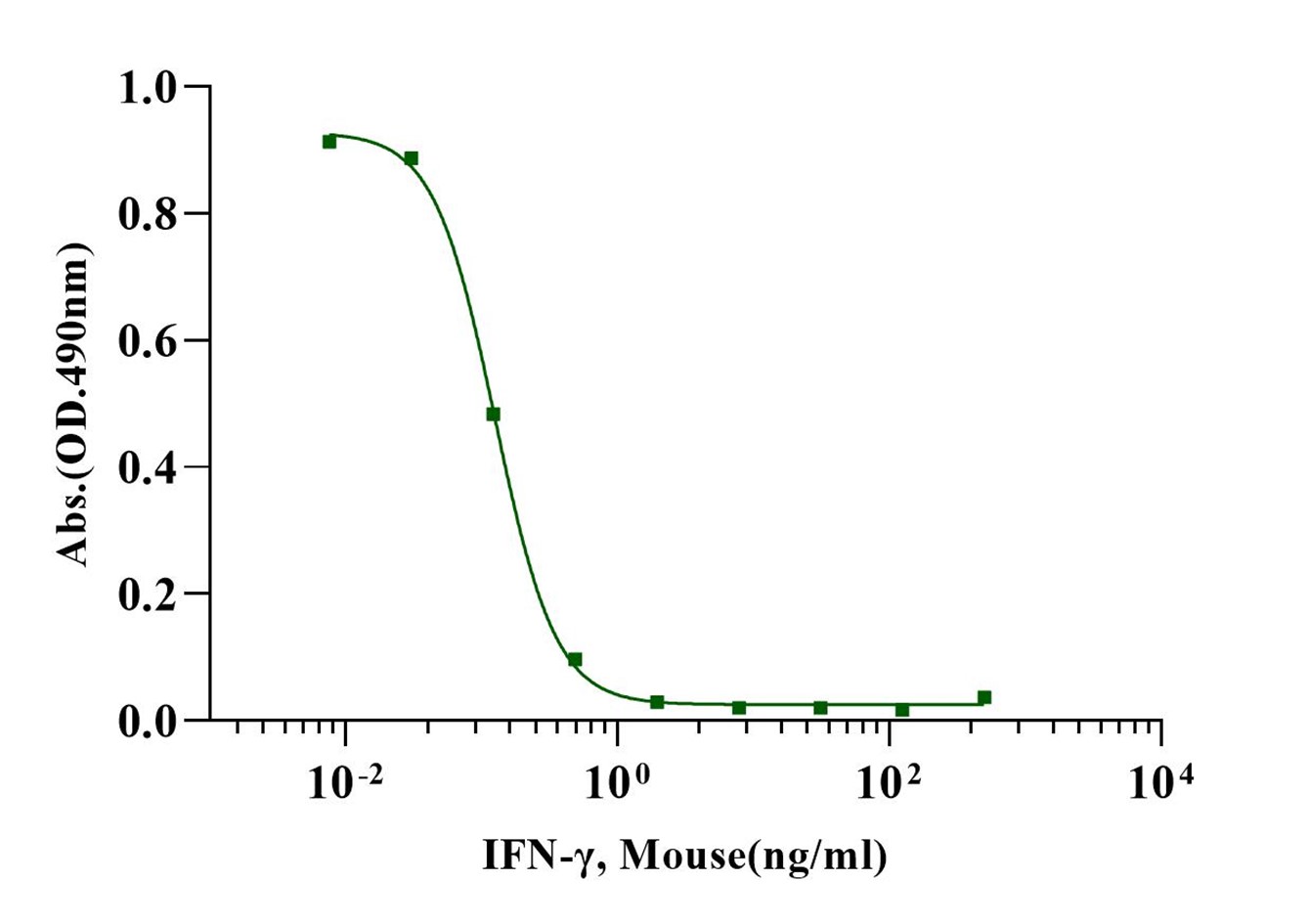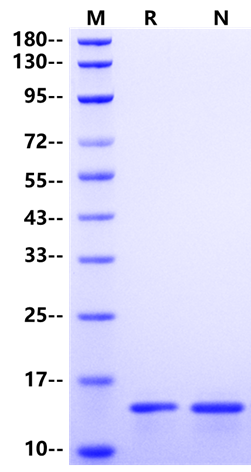



 下载产品说明书
下载产品说明书 用小程序,查商品更便捷
用小程序,查商品更便捷



 收藏
收藏
 对比
对比 咨询
咨询16kDa
16kDa

His23-Cys155

16kDa











Interferon gamma (IFN-γ) is a cytokine critical to both innate and adaptive immunity, and functions as the primary activator of macrophages, in addition to stimulating natural killer cells and neutrophils. A non-IgE-mediated anaphylactic reaction and severe bronchospasm have been reported once after the first injection of interferon gamma. IFN-γ activates cells via a different receptor than IFN-α and IFN-β, which accounts for the different physiological properties of the proteins. Production of IFN-γ is largely restricted to activated CD4+ TH1 T cells, CD8+ T cells, and natural killer cells. One of the most important consequences of IFN-γ secretion is the activation of macrophages. In addition, IFN-γ plays a central role in inflammatory responses by activating endothelial cells, promoting TH1 cell development and cellular immune responses, and up-regulation of major histocompatability complex protein expression on antigen-presenting cells.

Reconstitute at 0.1-1 mg/ml according to the size in ultrapure water after rapid centrifugation.

· 12 months from date of receipt, lyophilized powder stored at -20 to -80℃.
· 3 months, -20 to -80℃ under sterile conditions after reconstitution.
· 1 week, 2 to 8℃ under sterile conditions after reconstitution.
· Please avoid repeated freeze-thaw cycles.
1、Goshima N. et al. (2008) Human protein factory for converting the transcriptome into an in vitro-expressed proteome. Nomura N Nat Methods. 5: 1011-7.
2、Thiel D J. et al. (2000) Observation of an unexpected third receptor molecule in the crystal structure of human interferon-gamma receptor complex. Structure. 8(9): 927-936.
3、Schoenborn J R. et al. (2007) Regulation of interferon-gamma during innate and adaptive immune responses. Adv Immunol. 96: 41-101.

参考图片
Measured by cytotoxicity assay using WEHI-279 cells, The EC50 for this effect is less than 0.2ng/mL.
1μg (R: reducing condition, N: non-reducing condition).






 危险品化学品经营许可证(不带存储) 许可证编号:沪(杨)应急管危经许[2022]202944(QY)
危险品化学品经营许可证(不带存储) 许可证编号:沪(杨)应急管危经许[2022]202944(QY)  营业执照(三证合一)
营业执照(三证合一)